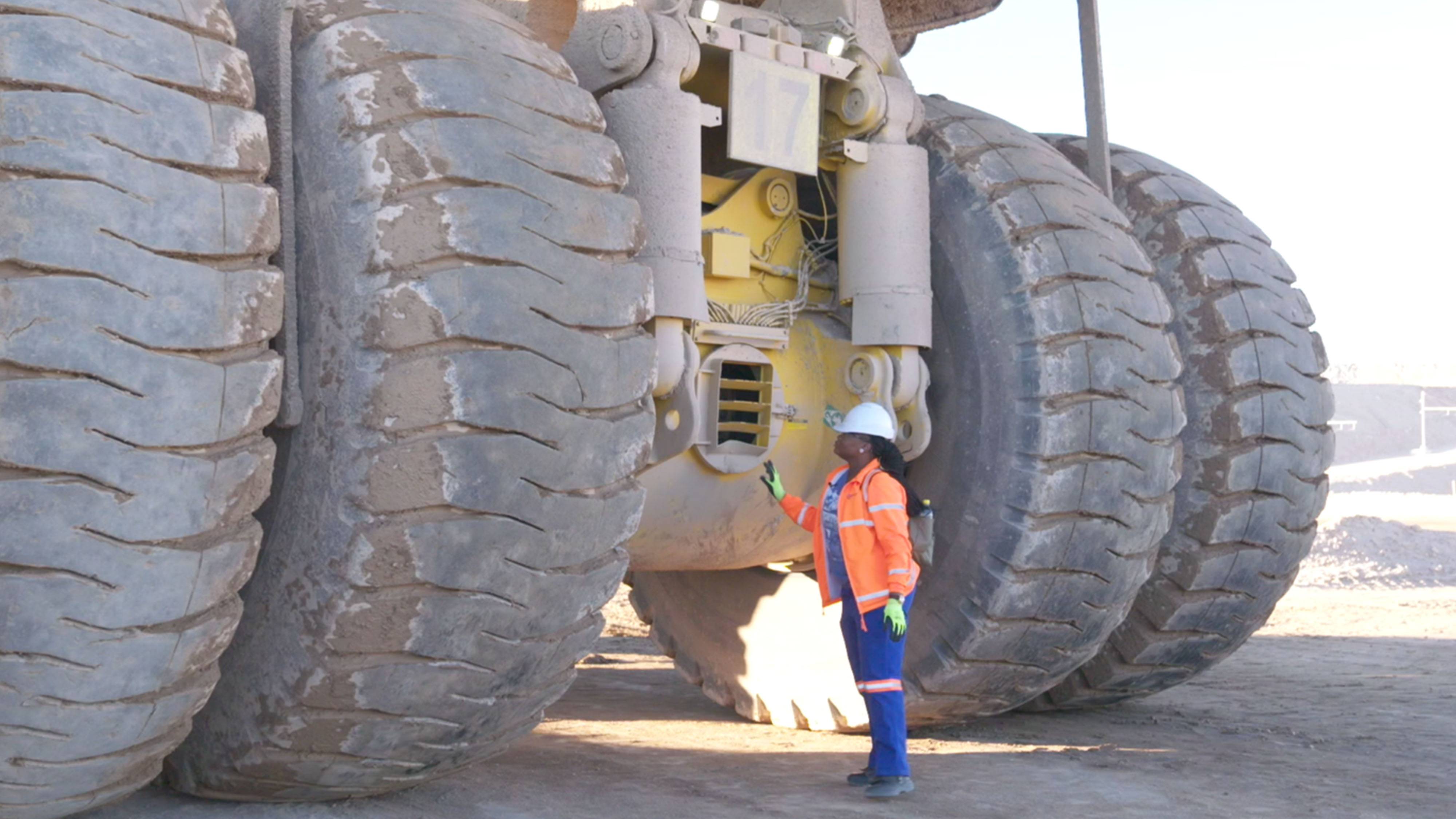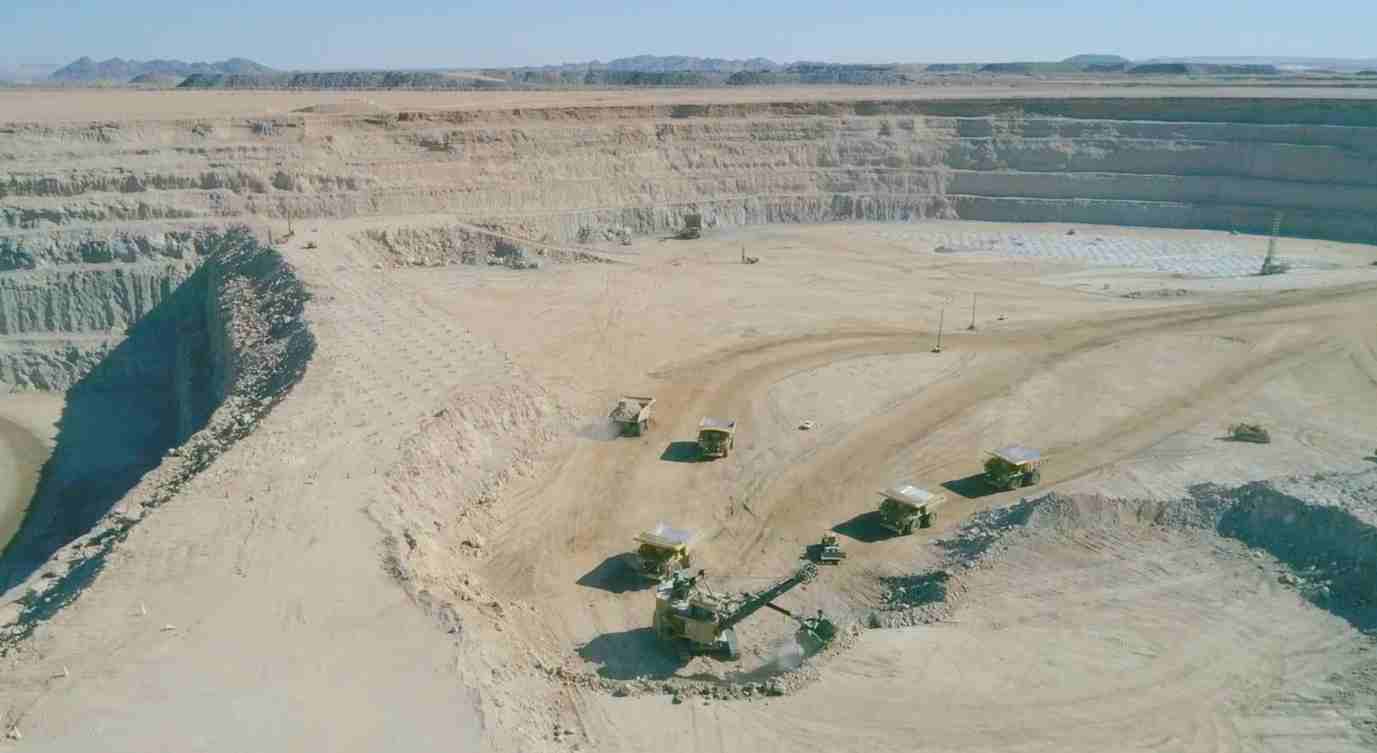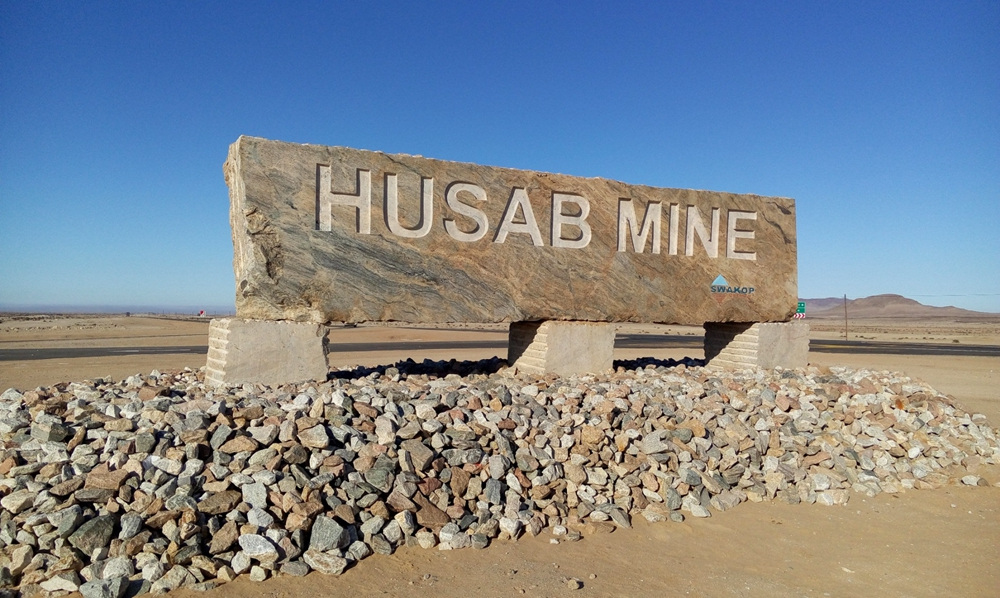
World
21:35, 23-Aug-2018
Female Namibian truck driver in Chinese-run uranium mine
Updated
21:33, 26-Aug-2018
By Li Jianhua
02:25

Workers traveling in shuttle buses all arrive at the Husab Uranium Mine at daybreak in the desert of Namibia. Among them, Kerry B. Puuahee, a female heavy-duty truck driver, is in her third year working at the Chinese-operated uranium mine, and she’s proving that this tough line of work isn’t just for men.
Opportunity in a “man’s world”
The workers start their day with “safety talks.” After the routine talks, truck drivers take shuttle buses to the “pit” where they work.
As one of the three female drivers, Puuahee admits her feeling of pressure.
“There are challenges because this is a man’s world. In a man’s world, most things we aren’t able to do physically. And the machines they do are also mostly based on the physicality of a man. So sometimes it’s hard for me,” Puuahee said.
She says truck driving is “a lovely experience,” and encourages other women to consider this as their career.

The “pit” at Husab Uranium Mine in Swakopmund, Namibia. /CGTN Photo
The “pit” at Husab Uranium Mine in Swakopmund, Namibia. /CGTN Photo
“To the fellow young women out there: This is an opportunity you have got to take… We’ve got to take the challenge and live up to the name of gender equality that we want,” Puuahee added.
“I guess my inspiration is my family, mostly my son. Everything that I do, I have to work very hard for that young man. I want him to have a bright future, things that I didn't have.”
One of China’s largest single investments in Africa
The Husab Uranium Mine in Namibia is one of China's largest single investments in Africa with a production of nearly 15 million pounds of uranosouranic oxide (U3O8) per year.
China General Nuclear Power Corporation (CGNPC) and other Chinese partners have a 90-percent share in the mine and the Namibian government-owned Epangelo Mining has 10 percent.
The Husab mine has sufficient reserves to supply enough uranium to power 20 Gigawatt Electric (GWe) of nuclear capacity for almost 40 years, according to the CGNPC.
Figures provided by the CGNPC shows the mine produced over 1,000 metric tons of uranium oxide in 2017.
The Chinese company announced that it would increase its nuclear fuel supply, including uranium mining, nuclear fuel pellets and nuclear fuel fabrication, in the hope of catering to the rising demand for its civil power plant projects.

Swakop Uranium, or Husab mine in Namibia. /CGNPC Photo
Swakop Uranium, or Husab mine in Namibia. /CGNPC Photo
“Electricity generated by clean energy from CGNPC increased 20 percent to 211.9 billion kilowatt-hours in 2017, the equivalent of 66.13 million tons of standard coal, thus reducing carbon dioxide emissions by 160 million tons, and nitrogen oxide and sulfur dioxide emissions each by 320,000 tons,” said Huang Xiaofei, spokesman for the CGNPC.
“(The) CGNPC has remained steadfast in its desire to see Husab become a reality despite difficult short-term uranium market conditions,” said Beata Meteka, the brand manager at Swakop Uranium.
Meteka added China’s capital investment in the project is a significant contributor to the Namibia national revenue.
(Cover: Kerry B. Puuahee conducts daily check-up on her truck, which carries up to 330 tons of uranium ore. /CGTN Photo)

SITEMAP
Copyright © 2018 CGTN. Beijing ICP prepared NO.16065310-3
Copyright © 2018 CGTN. Beijing ICP prepared NO.16065310-3